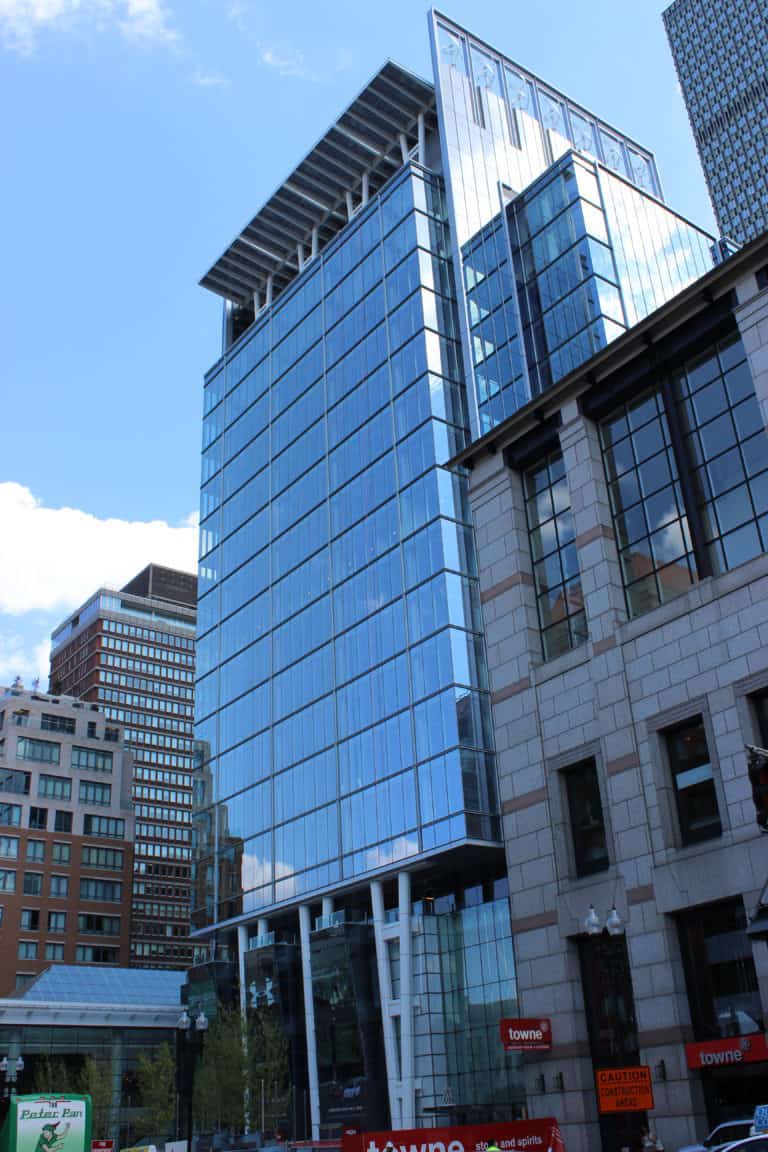Office buildings, hotels, and retail spaces continue to change Greater Boston’s landscape. In the midst of this development boom, some of the city’s new and refurbished properties have helped affirm Boston’s status as a leader in innovation, with many of these buildings incorporating green protocols. In fact, the American Council for an Energy-Efficient Economy has rated Boston as the most energy-efficient city in the country. This is due, in part, to the focus on sustainability in both new construction and the renovation of existing buildings.
Here is a look at some recent projects that have embraced energy efficiency.
Atlantic Wharf:
The Waterfront District’s Atlantic Wharf is home to both commercial and residential space featuring Energy Star-rated appliances, super-efficient LED lighting, and recycled building materials. The building has been awarded USGBC’s LEED Platinum certification and is considered Boston’s first green skyscraper. It uses approximately 30% less energy than similar buildings in the city.
101 Seaport:
101 Seaport Boulevard achieved LEED certification for implementing practical and measurable strategies, achieving high performance in sustainable site development, water savings, energy efficiency, materials selection, and indoor environmental quality. The mechanical system in 101 Seaport Boulevard is designed to cool the building through use of an active chilled beam system.
Millennium Tower:
Located in Downtown Crossing, the 60-story Millennium Tower maximizes sustainability benefits with a state-of-the-art building automation system. In addition to this, Millennium has taken further steps to ensure 75% of the tower’s electricity is generated from renewable energy sources.
888 Boylston:
A 17-story, 425,000sf LEED Platinum-certified office and retail building in Back Bay, 888 Boylston Street was designed to be the most sustainable building in New England. 888 Boylston St. uses 45% less energy and 37% less water than a typical office building of its size by utilizing a water-fueled chilled beam system which circulates 100% fresh air throughout the building. Solar panels and 14 wind turbines are coupled with other energy-saving features including a green roof, energy-efficient lighting, rainwater harvesting system, and a green wall that highlights the building’s lobby.
In addition to an uptick of energy-efficient office and retail spaces, Boston University has incorporated sustainable building practices into both small renovations and large construction projects alike. At BU, design and construction takes a broad spectrum of green building strategies into account. To accomplish this, the university uses the U.S. Green Building Council’s LEED Certification System to track opportunities in site development, water and energy efficiency, waste reduction, materials, resources, and indoor environmental quality. Going forward, BU has committed to meeting LEED certification standards in all new construction projects.
Looking ahead to 2019 and into the future the message is clear: Green buildings and energy efficiency will remain a top priority in construction and among the developers. Here in Greater Boston and around the country these people realize that utilizing green technologies is good for the environment, the community, and the bottom line
